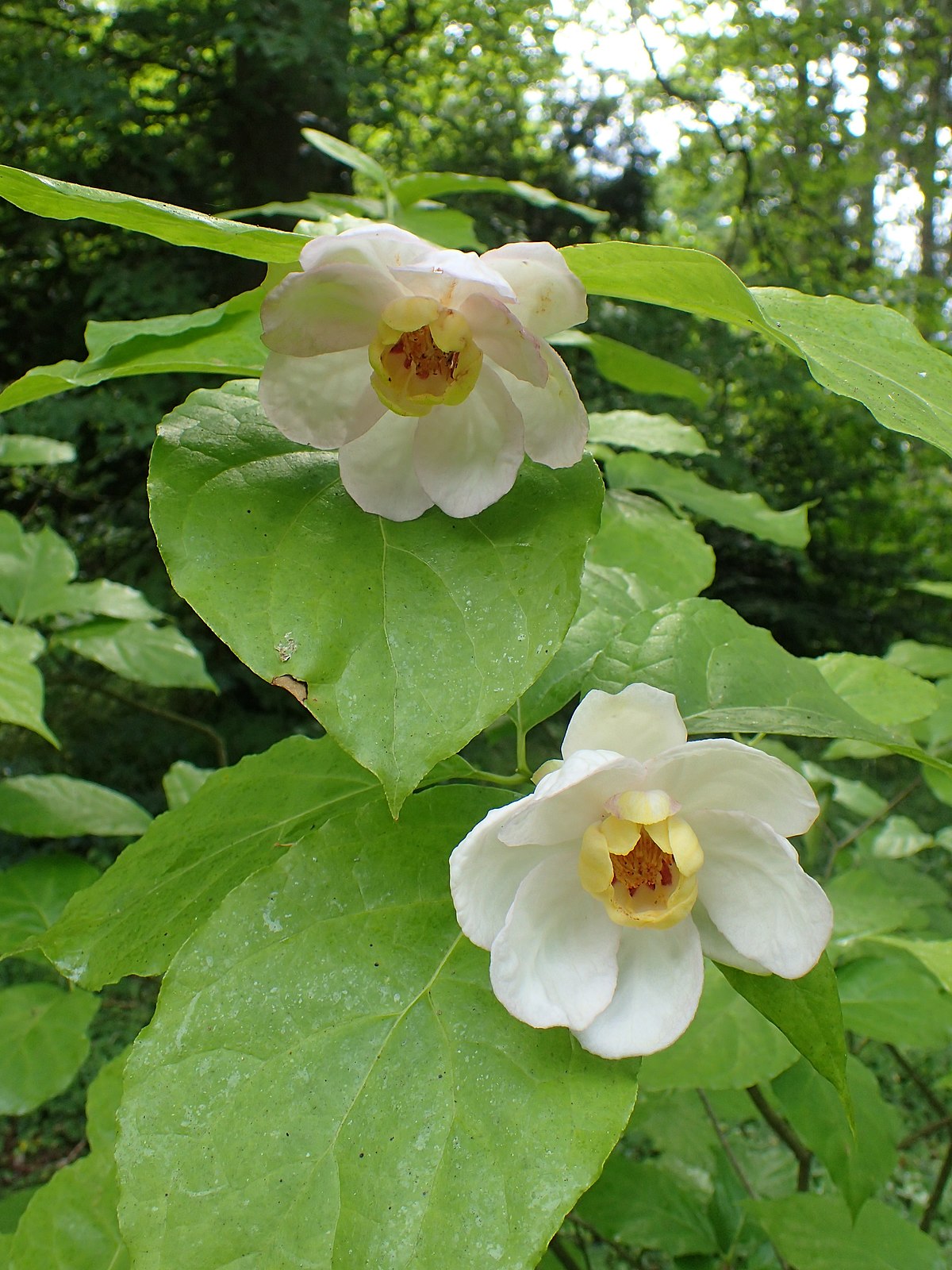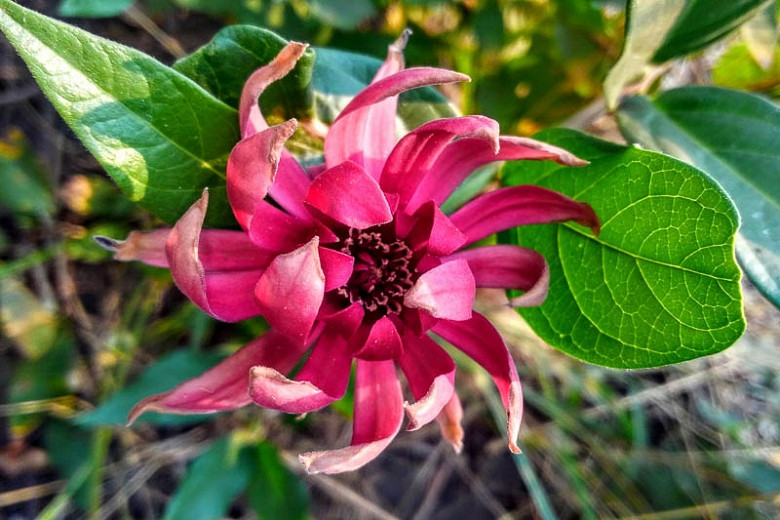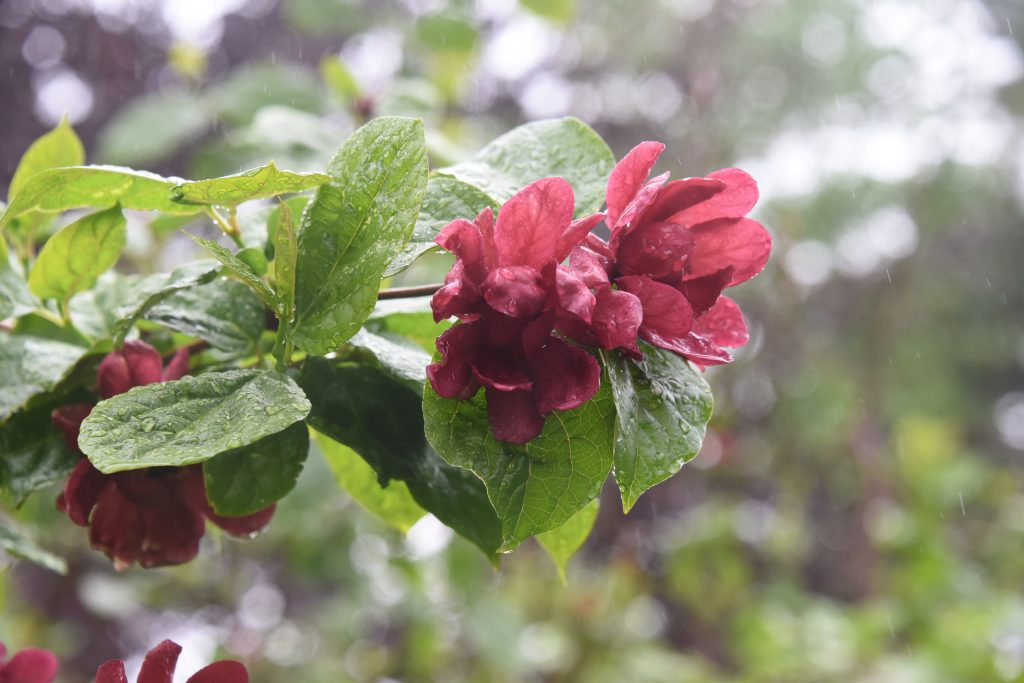Calycanthus: The Fragrant Shrub That's
Calycanthus: The Fragrant Shrub That's Perfect for Your Garden
If you're looking for a fragrant shrub to add to your garden, look no further than Calycanthus. Also known as Carolina allspice, sweet shrub, or spicebush, this deciduous shrub is native to eastern North America and is prized for its sweet, fruity fragrance.
Calycanthus shrubs typically grow to be 6-9 feet tall and 4-6 feet wide. They have dark green leaves that are oval or elliptical in shape and grow to be about 3-6 inches long. The flowers are solitary and appear in the spring, usually from April to May. They are dark red, maroon, or purple in color and have a sweet, spicy fragrance that has been compared to a combination of cloves, cinnamon, and nutmeg.
The flowers of Calycanthus are not only fragrant, but they are also quite beautiful. They are cup-shaped and have a waxy texture. The sepals and petals are similar in appearance and are referred to as tepals.
After the flowers bloom, they give way to urn-shaped fruits that are about 1 inch in diameter. The fruits are green at first, but they turn brown as they mature. They persist on the shrub throughout the winter.
Calycanthus shrubs are relatively easy to care for. They prefer full sun to partial shade and moist, well-drained soil. They are drought tolerant once established, but they will benefit from regular watering during the first year or two after planting.
Calycanthus shrubs are not susceptible to many pests or diseases. However, they may be occasionally attacked by aphids or scale insects. If you see any pests on your shrubs, you can remove them by hand or with an insecticidal soap.
Calycanthus shrubs are a beautiful and fragrant addition to any garden. They are relatively easy to care for and can tolerate a variety of conditions. If you're looking for a shrub that will add a touch of sweetness to your landscape, Calycanthus is a great choice.
Here are some additional things to keep in mind when growing Calycanthus shrubs:
- They can be propagated from seed, but it can take several years for them to reach flowering size.
- They are also easily propagated from cuttings.
- Calycanthus shrubs can be somewhat slow-growing, but they can live for many years.
- They are not invasive, so they are a good choice for gardens where you don't want shrubs to spread out of control.
- They are deer-resistant, so you don't have to worry about them being eaten by deer.
If you're looking for a fragrant shrub that is low-maintenance and deer-resistant, Calycanthus is a great choice. With its beautiful flowers and fragrant scent, it's sure to add a touch of sweetness to your garden.
Calycanthus, also known as sweetshrub, is a genus of flowering plants in the family Calycanthaceae. There are two to four species, depending on taxonomic interpretation; three are accepted by most 21st century sources. The plants are deciduous shrubs, growing to 4 m (13 ft) tall. The leaves are opposite and undivided. The plants are aromatic. The flowers are typical of the family Calycanthaceae in lacking distinct sepals and petals, but instead having spirals of tepals. Flowers are produced from spring onwards, until October in the case of C. occidentalis. The flowers of the two North American species are scented, 4–7 cm (1.6–2.8 in) across, with numerous dark red to burgundy to purplish brown tepals. C. floridus, the Carolina allspice, is native to the eastern United States from Virginia to Florida. C. occidentalis, the western sweetshrub, is native to California and Oregon.
If you're interested in learning more about calycanthus, I recommend visiting the website Garden Wiki. This website has a wealth of information about the genus, including its history, taxonomy, ecology, and cultivation. You can also find photos and illustrations of the different species, as well as tips on how to grow and care for them in your own garden.
FAQ of calycanthus
- What is Calycanthus?
Calycanthus is a genus of flowering plants in the Calycanthaceae family. It is native to eastern North America, and there are 5 species in the genus. Calycanthus plants are known for their fragrant flowers, which bloom in the spring. They are also known for their attractive foliage, which is often a glossy green color.
- What are the different types of Calycanthus?
The most common type of Calycanthus is the Eastern Sweetshrub (Calycanthus floridus). It is a deciduous shrub or small tree that can grow up to 10 feet tall. The flowers of the Eastern Sweetshrub are a deep maroon color and have a sweet, spicy fragrance. Other types of Calycanthus include the Carolina Sweetshrub (Calycanthus carolinus), the Chinese Sweetshrub (Calycanthus chinensis), and the Japanese Sweetshrub (Calycanthus japonicus).
- What is the habitat of Calycanthus?
Calycanthus plants prefer moist, well-drained soil and full sun to partial shade. They are tolerant of a wide range of soil pH levels and can be grown in USDA hardiness zones 5-9. Calycanthus plants are relatively deer-resistant and can be used as a hedge or specimen plant in the landscape.
- How do you care for Calycanthus?
Calycanthus plants are relatively easy to care for. They need regular watering, especially during the first year after planting. They should also be fertilized once a year in the spring with a balanced fertilizer. Calycanthus plants are not susceptible to many pests or diseases, but they may be affected by aphids or scale insects.
- How do you propagate Calycanthus?
Calycanthus plants can be propagated by seed, division, or cuttings. Seed propagation is the least reliable method, but it can be successful if the seeds are fresh. Division is the most common method of propagation. To divide a Calycanthus plant, dig it up in the fall or spring and carefully separate the roots into two or more sections. Each section should have at least one healthy root and one shoot. Cuttings can also be used to propagate Calycanthus plants. To take a cutting, choose a healthy shoot from a mature plant and cut it off with a sharp knife or shears. The cutting should be at least 4 inches long and have at least 3 leaves. Remove the lower leaves from the cutting and dip the end in rooting hormone. Plant the cutting in a pot of well-draining potting mix and keep the soil moist. The cutting should root in 4-6 weeks.
Image of calycanthus
- Calycanthus floridus, also known as sweetbay magnolia or Carolina allspice, is a deciduous shrub or small tree with fragrant, cup-shaped flowers.
- Calycanthus chinensis, also known as Chinese sweetbay, is a similar species with smaller, more delicate flowers.

- Calycanthus occidentalis, also known as western sweetbay, is a native North American species with dark green leaves and fragrant, orange-red flowers.

- Calycanthus praecox, also known as early sweetbay, is a native North American species with fragrant, yellow flowers that bloom in early spring.

- Calycanthus tetragona, also known as four-angled sweetbay, is a native North American species with fragrant, white flowers that bloom in late spring.

Post a Comment for "Calycanthus: The Fragrant Shrub That's"